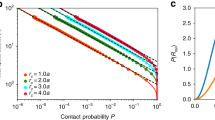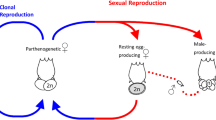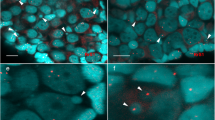Abstract
THE non-random distribution of chiasmata in a bivalent due to the occurrence of interference is well known. It has been suggested by some authors that the inter-bivalent distribution of chiasmata may also not be independently determined. Correlation studies on chiasma frequencies have demonstrated competition for chiasmata between bivalents in some organisms but not in others1,2. In the course of investigations on the cytogenetic effects of ionizing radiations on plants, we have been able to affect changes of chiasma frequency in one group of chromosomes in the nucleus and observe the reaction of the other group to this experimentally induced condition.
This is a preview of subscription content, access via your institution
Access options
Subscribe to this journal
Receive 51 print issues and online access
$199.00 per year
only $3.90 per issue
Buy this article
- Purchase on Springer Link
- Instant access to full article PDF
Prices may be subject to local taxes which are calculated during checkout
Similar content being viewed by others
References
Mather, K., Proc. Roy. Soc., 120, 208 (1936).
Prakken, R., Hereditas, 29, 475 (1943).
Rees, H., Heredity, 9, 93 (1955).
Mather, K., and Harrison, B. J., Heredity, 3, 1 (1949).
Author information
Authors and Affiliations
Rights and permissions
About this article
Cite this article
JAIN, H., BOSE, A. Experimentally Induced Inter-bivalent Redistribution of Chiasmata in Delphinium . Nature 186, 260–261 (1960). https://doi.org/10.1038/186260a0
Issue Date:
DOI: https://doi.org/10.1038/186260a0
This article is cited by
-
Genotypic control of chromosome behaviour in rye
Heredity (1964)
-
Interchromosome Effects of Chiasmata and Crossing-over
Nature (1963)
-
The control of intranuclear distribution of chiasmata in Delphinium
Heredity (1961)
Comments
By submitting a comment you agree to abide by our Terms and Community Guidelines. If you find something abusive or that does not comply with our terms or guidelines please flag it as inappropriate.



